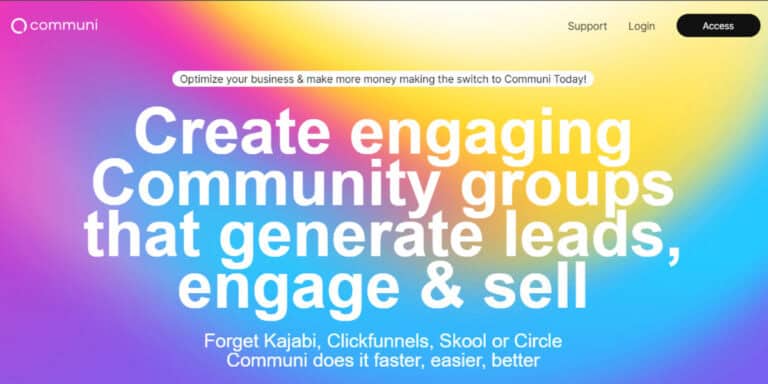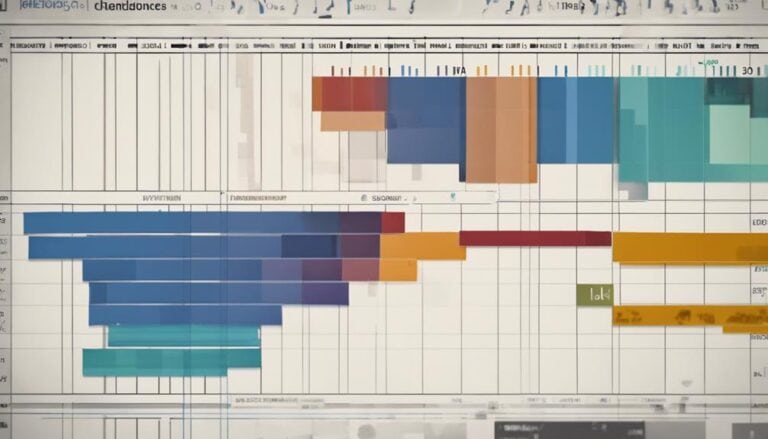You might be surprised to find that the debate between Waterfall and Flexible Planning goes beyond simple project management preferences.
As you navigate through the intricacies of methodology choice, project estimation nuances, and decision-making criteria, you'll uncover a wealth of insights that challenge traditional project management assumptions.
Stay tuned for a nuanced exploration that might just reshape your perspective on how projects can be successfully executed.
Key Takeaways
- Waterfall methodology follows a linear path, while flexible planning allows for adaptability to changing requirements.
- Agile methodology emphasizes continuous improvement and collaboration, contrasting with the structured approach of Waterfall.
- Agile involves stakeholders throughout the project, enabling quick adjustments, while Waterfall has limited post-requirement stakeholder involvement.
- Agile promotes effective communication, quick adaptation to changes, and efficient change management, enhancing project outcomes.
Overview of Waterfall Methodology
In the Waterfall methodology, each project phase, from requirements gathering to deployment, follows a linear progression emphasizing thorough planning upfront. This structured approach entails moving through defined project phases such as requirements, design, implementation, testing, and deployment in a sequential manner. The Waterfall model is known for its methodical and well-defined scope and requirements, making it suitable for projects with stable parameters.
One key aspect of the Waterfall methodology is its challenging nature when it comes to accommodating changes in requirements. Once a phase is completed and the project progresses to the next stage, it becomes increasingly difficult and costly to make modifications to the initial requirements. This is due to the rigid and linear process of the Waterfall model, where each phase builds upon the previous one, necessitating a high level of certainty in the project's scope from the outset. Therefore, for projects with clear and unchanging requirements, the Waterfall methodology provides a structured and effective approach to project management.
Overview of Flexible Planning Approach
How does a Flexible Planning Approach differ from the Waterfall methodology in project management? Flexible planning stands out for its adaptability and emphasis on continuous improvement throughout the project lifecycle. It allows for iterative development, enabling teams to respond quickly to feedback and evolving requirements. This approach fosters collaboration among team members, promoting real-time decisions based on current project needs and priorities. To illustrate the key differences between Flexible Planning and Waterfall methodologies, let's compare them side by side:
| Flexible Planning | Waterfall Methodology |
|---|---|
| Adaptability to changing requirements | Sequential, rigid structure |
| Iterative development and feedback loops | Linear progression with minimal flexibility |
| Emphasis on continuous improvement | Limited opportunities for adjustments |
| Real-time decision-making | Decisions made early in the process |
| Collaboration among team members | Limited interaction until later stages |
Flexible planning thrives on dynamic project environments, encouraging teams to adapt, innovate, and excel in delivering successful outcomes.
Project Structure and Phases
To better understand the differences in project structure and phases between Flexible Planning and the Waterfall methodology, let's analyze how each approach defines and navigates through the key stages of a project.
The Waterfall model adheres to a sequential project structure, progressing through phases like requirements gathering, design, implementation, testing, and deployment in a linear fashion. In contrast, Flexible Planning offers adaptable phases that can adjust based on changing project needs and feedback received during the process.
While the Waterfall model necessitates the completion of each phase before moving on to the next, Flexible Planning allows for concurrent or overlapping phases, enabling a more flexible and adaptive project timeline. Moreover, the Waterfall model struggles with changes post-phase completion, which can be challenging and costly, whereas Flexible Planning accommodates modifications throughout the project lifecycle.
Embracing iterative development and continuous improvement, Flexible Planning stands out for its ability to respond to evolving requirements and enhance project outcomes in a more dynamic manner compared to the rigid structure of the Waterfall model.
Approach to Requirements Gathering
When considering the approach to requirements gathering, it's crucial to acknowledge the significance of stakeholder input. This input plays a vital role in ensuring that the project aligns with the needs and expectations of those involved.
Additionally, embracing iterative feedback loops allows for continuous improvement and adjustment based on evolving requirements.
Stakeholder Input Importance
Emphasizing continuous stakeholder involvement throughout all project stages, especially in the requirements gathering phase, is a key distinguishing factor between Waterfall and Flexible Planning methodologies. In Waterfall, stakeholder input is primarily gathered upfront during the requirements phase, while in Flexible Planning, akin to Agile methodologies, stakeholders are encouraged to provide continuous input and be involved in all project stages. This approach in Agile methodologies is crucial for prioritizing features, ensuring customer satisfaction, and delivering value iteratively throughout the project. Below is a comparison table highlighting the differences in stakeholder input importance between the Waterfall approach and Flexible Planning:
| Aspect | Waterfall Approach | Flexible Planning (Agile) |
|---|---|---|
| Stakeholder Input | Limited involvement after requirements phase | Continuous input and involvement in all stages |
| Requirements Phase | Structured and formal | Adaptive and open to changes at any point |
| Customer Satisfaction | Less flexibility to adapt to evolving needs | More adaptable to new insights and requirements |
Iterative Feedback Loops
Shifting focus to the iterative feedback loops within the realm of requirements gathering, Agile methodologies excel in fostering continuous refinement through ongoing collaboration with stakeholders. Unlike Waterfall, which relies on upfront requirements gathering, Agile's iterative feedback loops provide flexibility to adapt to changing needs.
This approach allows for quick adaptation and alignment with stakeholder expectations, enhancing client satisfaction. Agile's emphasis on stakeholder collaboration ensures that the project remains responsive to evolving requirements. In contrast, Waterfall's rigid requirements gathering process can lead to challenges when modifications are required later in the project.
Quick Adaptability to Changes
With Agile methodologies, requirements are gathered incrementally, allowing for ongoing adjustments based on evolving needs throughout the project lifecycle. This flexible and iterative approach contrasts with the rigid structure of the waterfall methodology. Here's how Agile's adaptability in requirements gathering enhances project success:
- Incremental Adjustments: Agile allows for quick responses to new information or shifting priorities during the development process.
- Alignment with Project Goals: Agile's flexibility enables better alignment with evolving project goals and stakeholder feedback.
- Easier Incorporation of Changes: Agile methodology makes it easier to incorporate changes compared to the waterfall approach.
- Enhanced Adaptability: Agile's iterative approach to requirements gathering enhances adaptability in the face of changing project requirements.
Team Collaboration and Communication
Team collaboration and communication are foundational pillars in Agile methodology, fostering daily interactions and cross-functional teamwork. Agile methodology emphasizes frequent communication through daily stand-up meetings, enabling team members to share progress, challenges, and updates regularly. This approach promotes cross-functional collaboration, where individuals from different disciplines work together closely to achieve project goals efficiently.
In contrast, Waterfall methodology often involves less team collaboration as it follows a more structured and phased approach, limiting interactions between team members.
Agile values open communication channels, encouraging team members to communicate openly and transparently throughout the project. Effective communication is essential in Agile methodology to ensure that all team members have a shared understanding of project requirements, goals, and progress. By promoting a collaborative environment and emphasizing effective communication practices, Agile teams can enhance productivity, creativity, and overall project success.
Adaptability and Change Management
When considering adaptability and change management in project methodologies, it's vital to explore the effectiveness of change management strategies. Agile methodology offers notable benefits in this area, such as quick adjustments, feedback incorporation, and iterative cycles to facilitate efficient change management.
Change Management Strategies
Embracing adaptability as a cornerstone, agile methodologies prioritize change management strategies to swiftly respond to shifting requirements and market dynamics. When it comes to change management in agile environments, here are some key strategies:
- Continuous Feedback: Agile frameworks like Scrum and Kanban emphasize incorporating feedback into the development process.
- Iterative Cycles: Agile teams use iterative cycles to facilitate rapid changes and respond promptly to evolving project needs.
- Culture of Adaptation: Agile methodologies promote a culture where change is seen as a positive force for improvement and innovation.
- Regular Retrospectives: Change management in agile involves regular retrospectives and reviews to assess and adapt project strategies effectively.
Agile Approach Benefits
With a focus on adaptability and change management, agile methodologies excel in fostering dynamic project environments by embracing iterative development cycles and continuous feedback integration. Agile approach allows for flexibility in responding to evolving needs, ensuring that stakeholder involvement is maintained throughout the project.
By promoting iterative development, agile methodology enables quick adjustments based on new information and changing requirements. Its emphasis on managing changes effectively and incorporating feedback from stakeholders makes it suitable for dynamic and uncertain project environments.
Agile's ability to adapt to evolving circumstances and embrace change sets it apart in enabling projects to meet stakeholder expectations and deliver value in an ever-changing landscape.
Risk Management Strategies
Utilize a proactive risk management approach to address uncertainties effectively throughout your project, whether following a Waterfall or Agile methodology. When considering risk management strategies in both Waterfall and Agile approaches, it's crucial to tailor your methods to the specific characteristics of each methodology.
- Upfront Identification vs. Continuous Assessment: In Waterfall, risks are identified and mitigated during the planning phase, while Agile emphasizes ongoing risk assessment and responses during the project lifecycle.
- Adaptation Challenges: Waterfall's rigid structure makes it difficult to adapt to unforeseen risks post-planning, whereas Agile allows quick adjustments based on evolving conditions.
- Fixed Timeline vs. Flexibility: Waterfall's fixed timeline and limited flexibility increase the risk of issues during project execution, whereas Agile's adaptability offers a buffer against uncertainties.
- Risk Response: Waterfall's predetermined risk responses may not be effective for all scenarios, whereas Agile's iterative nature enables tailored responses to emerging risks swiftly.
Time and Cost Estimation Techniques
Consider employing structured estimation techniques to effectively forecast project timelines and costs, a critical aspect in project management.
In the waterfall method, detailed planning upfront is key for accurate time and cost estimation. This approach emphasizes precision but may lack adaptability when project requirements evolve.
On the other hand, agile methodology allows for continuous re-estimation based on changing project needs, prioritizing adaptability over strict precision. Agile's focus on adaptability influences time and cost management, as changes in scope impact estimates.
When choosing between waterfall and agile, it's crucial to consider the project's requirements and uncertainties. While waterfall is suitable for projects with well-defined scopes, agile is more flexible and responsive to changes.
Decision-Making Criteria and Flexibility
Incorporating flexible planning into project management processes allows for dynamic adjustments to decision-making criteria in response to evolving circumstances and stakeholder input. When comparing the Waterfall model with flexible planning, the ability to modify decision-making criteria in real-time stands out as a significant advantage. Here's how flexible planning excels in decision-making criteria and adaptability:
- Waterfall Model: Decision-making criteria are typically fixed at the project's outset, leading to limited adaptability as project progresses.
- Flexible Planning: Enables ongoing adjustments to decision-making criteria based on project progress and changing requirements, fostering adaptability.
- Rigid Structure: Waterfall model's adherence to predetermined criteria restricts real-time modifications to decision-making processes.
- Real-Time Modifications: Flexible planning allows decision-makers to respond promptly to new information, stakeholder feedback, and emerging challenges, enhancing adaptability in decision-making.
Frequently Asked Questions
Why Is Waterfall Considered Too Flexible?
Waterfall is considered too inflexible because of its strict scope control, timeline adherence, and resistance to requirement changes. Development delays, risk management issues, and communication challenges can arise, impacting stakeholder alignment and quality assurance.
What Is the Difference Between Agile and Waterfall Planning?
In agile planning, you embrace iterative development, focusing on incremental delivery, customer collaboration, rapid feedback, and an adaptive approach. Change management is key, utilizing the Scrum framework for continuous improvement.
What Is the Difference Between Plan Driven and Waterfall?
In a plan-driven approach, sequential phases are followed with detailed documentation and limited adaptability. It emphasizes planning, predictability, and lacks feedback loops. This method leans towards rigidity over flexibility, suited for projects with stable requirements and scope.
What Is the Downside of Waterfall Approach?
When using the waterfall approach, you may face challenges due to its limited adaptability, inflexible structure, and strict requirements. This sequential development method may result in high risk, long delivery times, and difficulties with changes.
Conclusion
Congratulations! You've navigated the turbulent waters of project planning, weighing the structured Waterfall against the flexible Agile approach. Like a skilled captain steering a ship through stormy seas, you've learned the importance of adaptability, communication, and risk management.
Remember, choosing the right methodology is like choosing the perfect sail for your vessel – it will determine how smoothly you navigate towards your project goals.
Fair winds and following seas on your project management journey!





